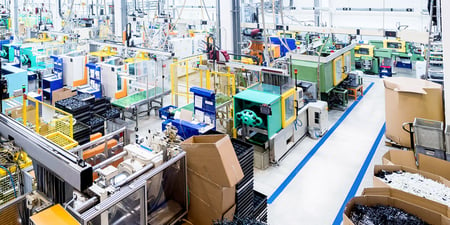
More often than not, thermoplastic processors run more than one resin. This is not a secret to injection molders but it's becoming more of the norm with sheet, blown film, blow molders and other types of extruders.
Transitioning resins with vastly different heat profiles and viscosities present challenges that can be both time consuming and expensive. Options range from a complete tear down and cleaning of the equipment to running resin for hours until the previous material is displaced.
The use of purging compounds is an effective tool to minimize the time and cost of these transitions but in some situations it can also be difficult to remove the purge after it does its job. Sometimes, carrier resins and other ingredients can leave a residue that may hang up.
If you run into this problem, one solution is to use a bridge. Running an inexpensive commodity resin or regrind with viscosity slightly less than the purge will expedite the process of removing it. It serves as a bridge between the two viscosities. It is an additional step in these situations but the time and cost is justifiable given the alternatives.
I recently worked with a customer with a sheet extruder that was having difficulty transitioning from a HMWPE to ABS. Even though the heat profiles were close, the viscosities were not.
Use of a purge compound followed by a HDPE bridge reduced an eight hour transition to two hours giving back six hours of valuable productivity. Sometimes a little fix can have huge results on your bottom line.
Learn how to reduce machine downtime with five quick purging compound tips for your injection molding application.

Chris Melchiore, serving as Business Development Manager at Asaclean Purging Compounds, excels with his specialized knowledge in Chemical Purging Compounds and Concentrate Grades. His industry journey, extending over two decades, includes a notable 16-year stint at NOVACHEM before joining Asaclean in 2015. Beyond his core role, Chris is actively involved in speaking engagements at webinars and tradeshows, showcasing his expertise and contributing to the broader industry dialogue. His insights and experience make him a pivotal figure in both business development and educational outreach for Asaclean.








Comments